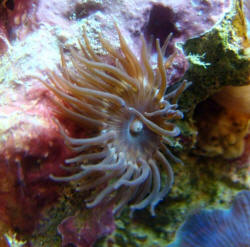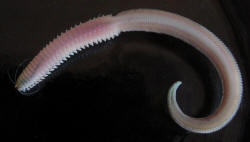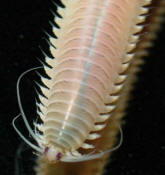|
Related FAQs:
Related Articles:
Guidelines for ID
Queries
|
|
|
By Lynn Zurik
|
|
Before asking the
crew: Please refer to the "How to ID an Organism"
chart at the following link: ID Guide
Flowchart If you are unsuccessful after going through the steps
provided, please follow the guidelines below and submit a query to the
crew through this link: http://www.wetwebmedia.com/WWMAdminSubWebIndex/question_page.htm
*Be sure to follow the general
guidelines for submitting questions to the crew.*
ã''
Basic requirements: In order for us to
have the best chance of correctly identifying an organism, we will need
the following:
- As much of the following information as you can
provide:
- Size of the organism
- What part of the world it originated
- How it was introduced into your system (live rock, coral,
plant, macro-algae, etc.)?
- If it arrived with/on a coral, what type?
- General observations, including:
- If the organism is stationary, where is it located within the
system (rockwork, tank walls, etc.)?
- If it's mobile, where does it spend the majority of its
time when active (rockwork, tank walls, water column, substrate,
around a coral or other organism, etc.)?
- When do you generally see the organism (during the day, at
night/after lights out, only at feeding time, etc.)?
- Have you noticed any evidence of injury, death, disappearance,
or impact on other livestock?
- Any physical characteristics not visible in the photos.
ã''
- Good, reasonably sized, detailed photos: taken from
several angles in high resolution, but not over 500Kb in file size
each. See below regarding specific photographic needs for
various aquatic groups. Note: when photographing small organisms,
it's often easier to move the subject to a clean, shallow bowl or
plastic container filled with a small amount of tank water. For
further tips on photography, please see the following link:
http://www.wetwebmedia.com/ca/volume_2/cav2i2/aquarium_photography/photography.htm
ã''
 Anemone or anemone-like organisms Anemone or anemone-like organisms
- Photo showing the oral disc and tentacles
- Photo of the column/base, if at all possible
ã''
- One photo showing the entire carapace, all legs and claws
- One photo showing the anatomy of the claws/claw shape, depth of
carapace, "facial" anatomy
- If you can get a shot of the ventral/underneath surface,
that's great, but not vital
- If not visible in the photo(s) does the crab have 3 pairs of
walking legs or four?
ã''
- One photo showing the entire top/dorsal length of the
insect
- One photo, if possible of the abdomen/tail section
- One photo showing the length of the dorsal/top surface
- One taken from the side, showing the profile and
appendages
- If possible, a close-up of the head taken from above
- If possible, a close-up of the tail fan
("telson")
- If possible, a close-up of any unusually large claws or other
distinguishing feature(s)
ã''
- Snails, organisms with shells
- Photo of the top surface of the shell, showing the entire
length
- Photo of the underside, showing the opening (aperture)
- If possible, a photo that includes the animal crawling
about
- A photo that shows the operculum (trap door), if visible. If
a photo is impossible, try to determine whether the operculum is
thick and calcareous, or thin and flexible. Note the color. Bear
in mind that not all snails have an operculum. If you don't
see one, let us know.
ã''
- One photo showing the top/dorsal surface
- One showing the underneath/ventral surface
- One photo taken from the side, showing the turtle's overall
profile
  
- Photo showing as much of the organism as possible, preferably a
view of the entire dorsal/top surface.
- Photo Close-up of the anterior portion/head, if at all
possible.
*Organisms shown are identified as follows:
Anemone: Majano; Crab: Pilumnus sp.; Insects: damselfly nymph; Shrimps
(Lt-Rt): pistol shrimp, mantis shrimp, Lysmata amboinensis (telson/tail
fan); Snails (Lt-Rt): Euplica varians (1,2), Gemophos tinctus (3);
Turtles: Trachemys spp.; Worms (Lt-Rt): Nereid epitoke (1,2), leech
(3).
*All photos © Lynn Zurik,
with the exception of the following: damselfly nymph: © J-P;
turtles and leech: © Neale Monks.
|
|

